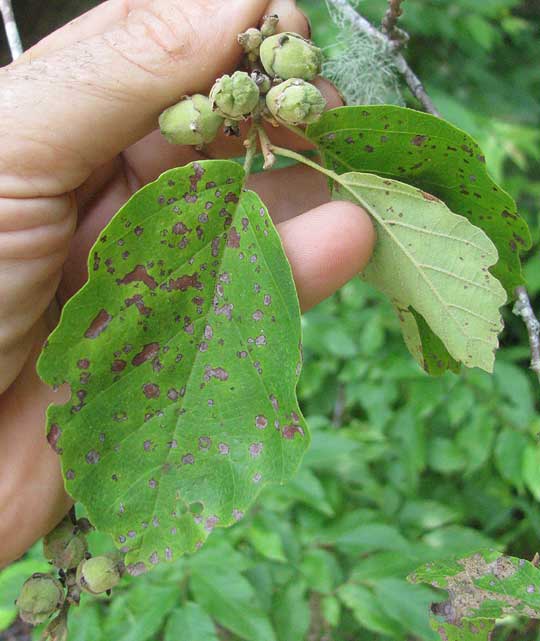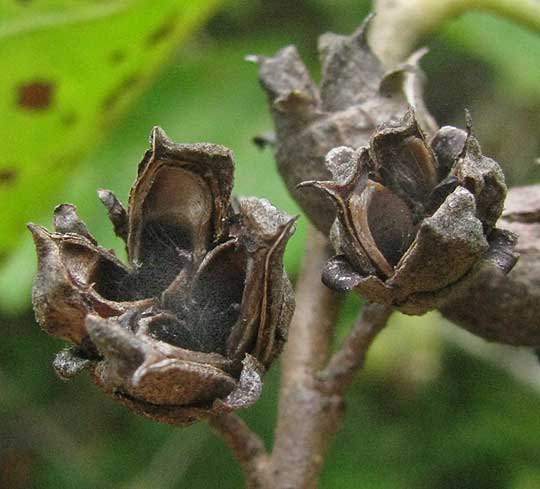Excerpts from Jim Conrad's
Naturalist Newsletter
from the June 3, 2012 Newsletter issued from the woods of the Loess Hill Region a few miles east of Natchez, Mississippi, USA
WITCH-HAZEL FRUITS
Beside a stream through a bottomland woods a ten-ft-high (3m) shrub or small tree was loaded with immature, curious-looking fruits, as shown below:

The distinctive leaves, with their wavy margins and lopsided bases, help us recognize this as Witch-Hazel, HAMAMELIS VIRGINIANA. On the same tree producing these green fruits were the remains of old fruits, now brown and split open with their black seeds already dispersed, shown below:

Witch-Hazels are members of the Witch-Hazel Family, the Hamamelidaceae, along with abundantly occurring Sweetgum trees. That's worth reflecting on because if you squeeze several woody, Witch-Hazel fruits together into a ball, with their pointed tops facing outwards, you get a structure very much like a "Sweetgum ball" -- those spiny fruit clusters that anyone familiar with Sweetgums knows about. It makes sense that Witch-Hazels and Sweetgums belong to the same family.
When I was a kid in Kentucky Witch-Hazels got my attention not only because of their unusual appearance and evocative name, but also because old farmers in my area sought out forked Witch-Hazel stems for divining rods used for finding water. Also, my grandparents rubbed a commercial Witch-Hazel extract over parts of their bodies afflicted with what they called rheumatism.
The Witch in Witch-Hazel derives from Middle English wiche, from Old English wice, meaning "pliant" or "bendable." Probably its use as divining rods encouraged the word's transition to "Witch."
Medicinally, Witch-Hazel has lots of uses. As with the oaks, extracts of its bark and leaves are astringent -- they cause tissue to pucker. Thus they help shrink and contract blood vessels and are used as the active ingredient in many hemorrhoid medications. On the Internet I find a 4-oz (118ml) bottle of "Witch Hazel Extract" selling for US $37.74.